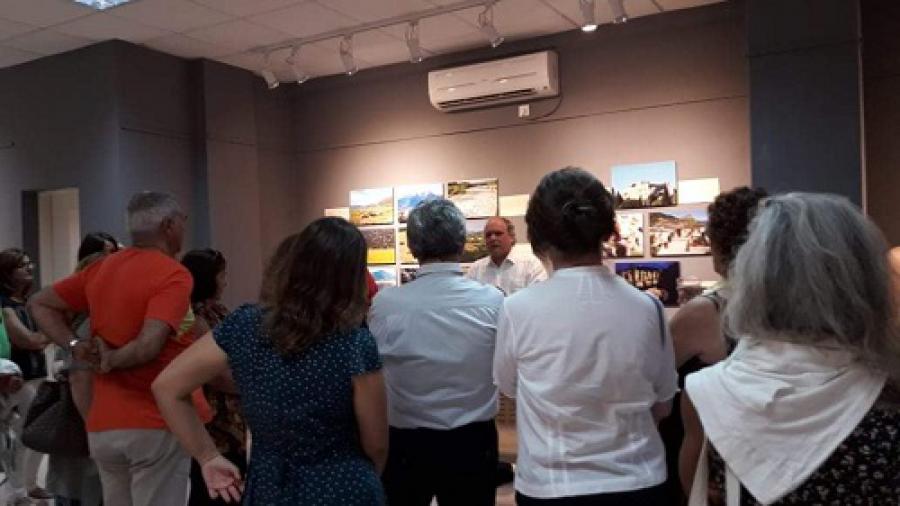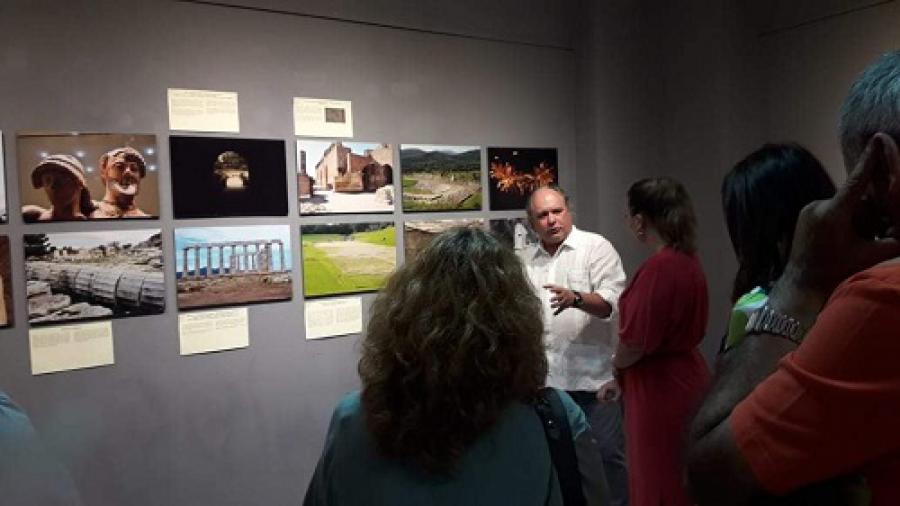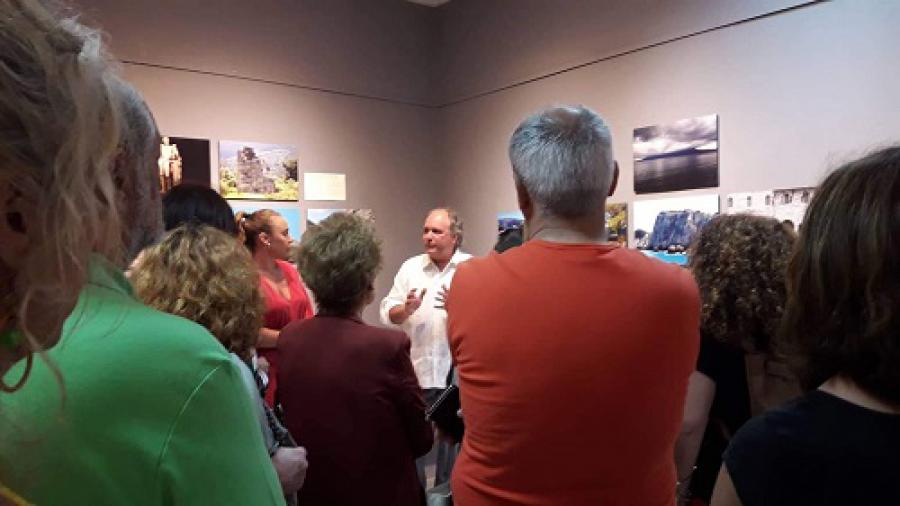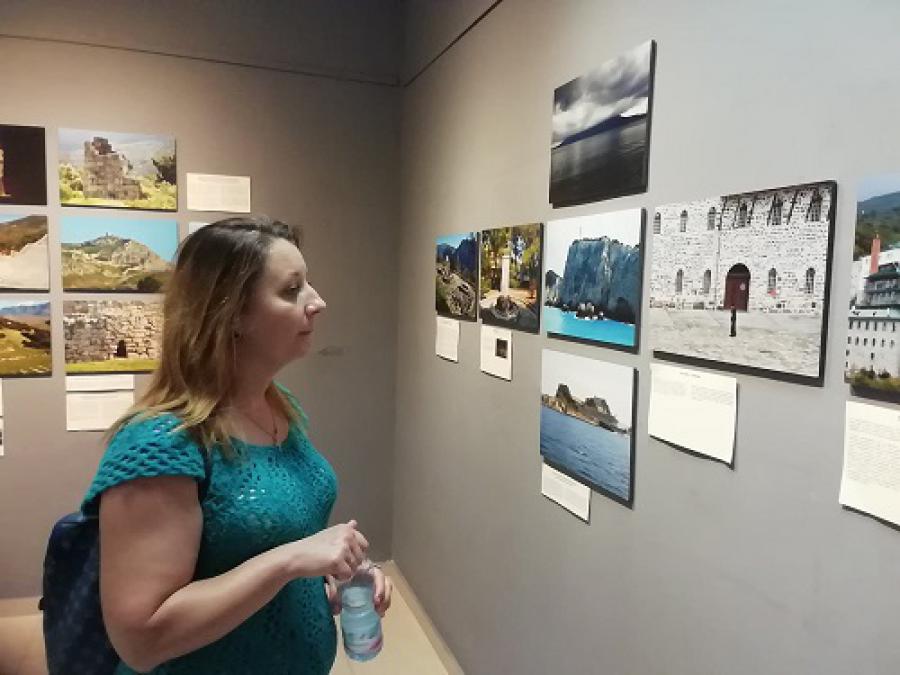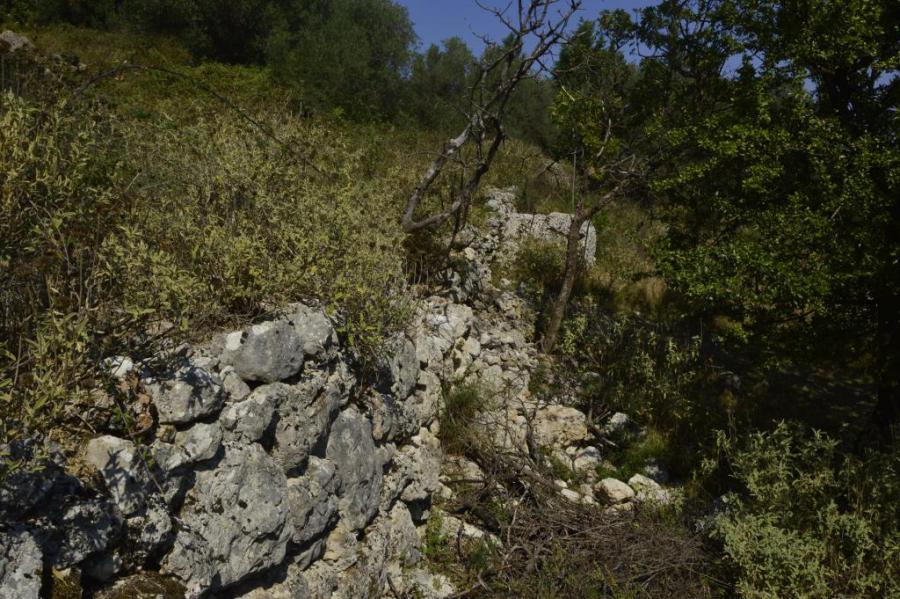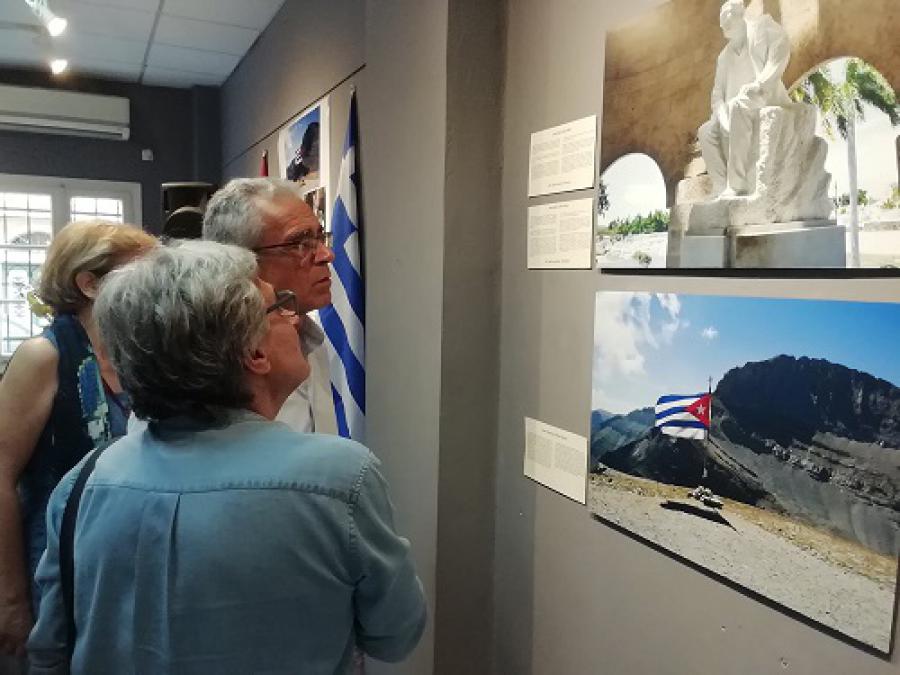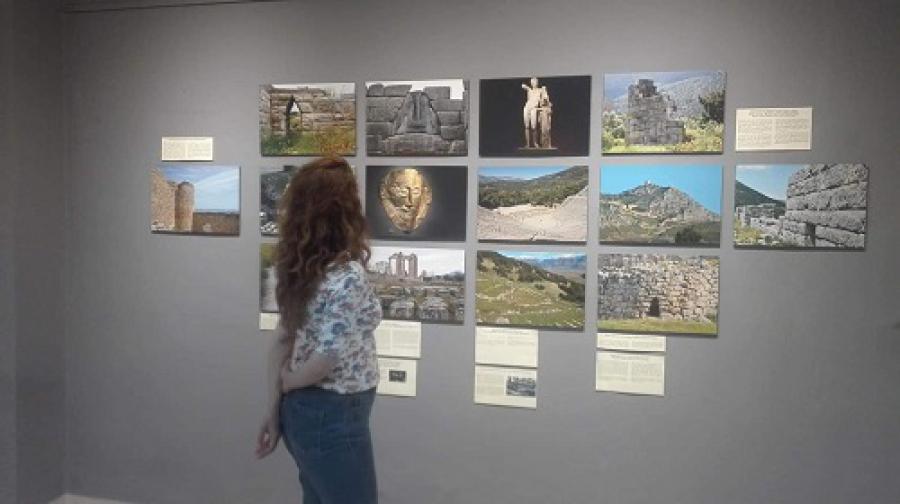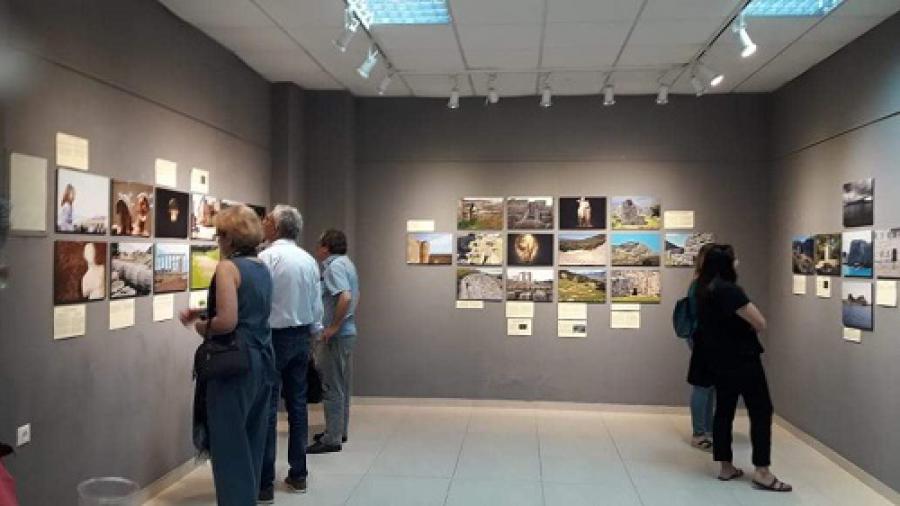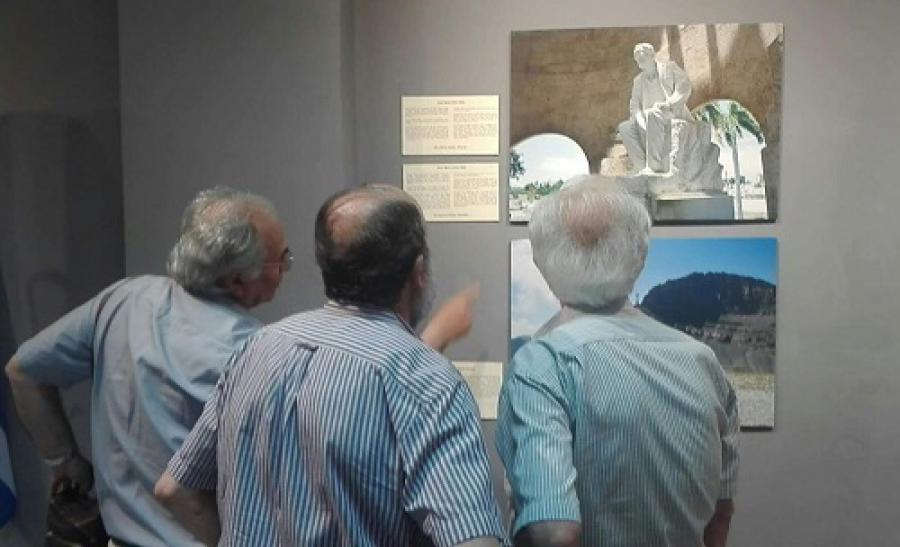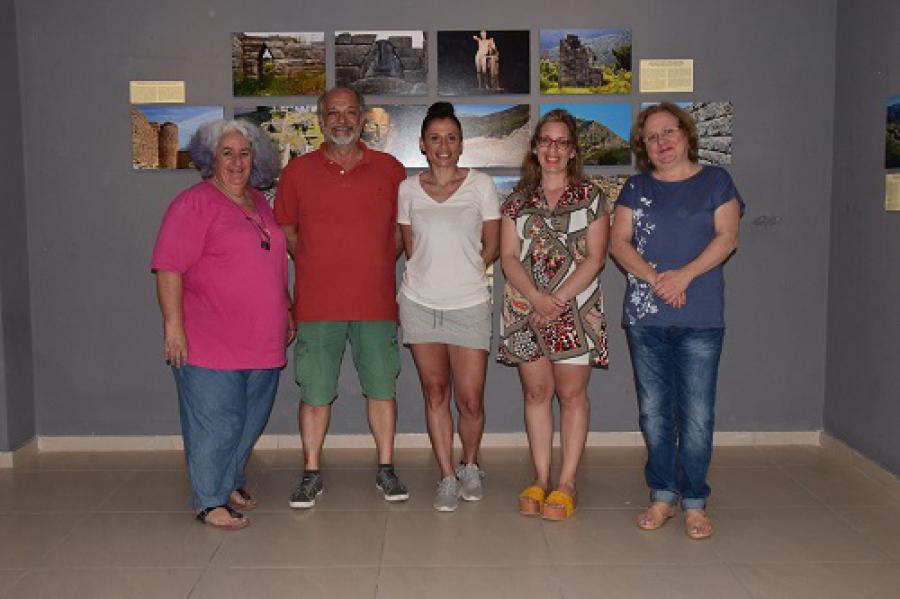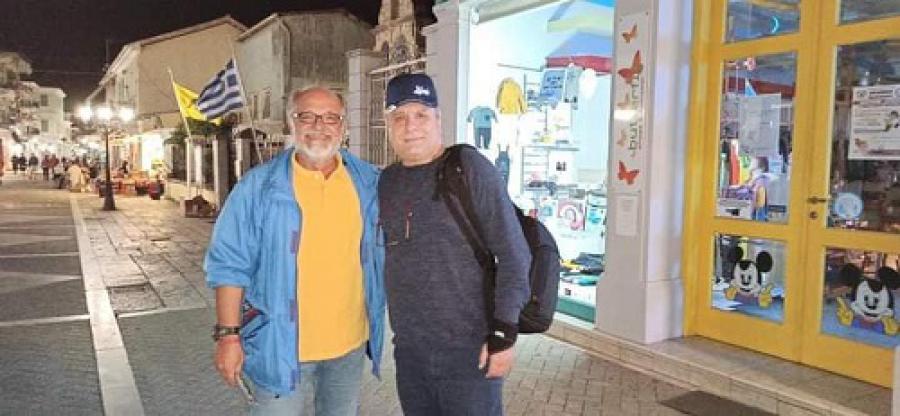(Taken from Facebook Oriol Marrero, counselor of the Embassy of Cuba in Greece)
Fourth part (IV): Lefkada: “José Martí, with Greece in his heart”. June. 2019.
Heartfelt thanks to the people who have found time to read / comment on the series of modest publications: “Cuba: a sponsor of world solidarity and humanism, of respect for life and friendship, promoter of peace and cultural encounters among all the peoples of the world ”.
On a night in June 2019, the opening of the photographic exhibition “José Martí, with Greece in the heart” took place on the Greek island of Lefkada.
This would be a day that is difficult to forget. There were the Greek friends, the highest authorities of the city -both outgoing and incoming, since the elections had just finished-, Cuban citizens residing in Lefkada with their families, not a few people who were interested in knowing the sample -as will be seen in the images – and that they wanted to participate in the excellent opening evening of the exhibition, which featured a magnificent cultural presentation by a virtuoso and award-winning Cuban musician living in Lefkada.
As will be seen in the images placed at the end, it would be pleasant and very stimulating if the members of an Amateur Photography Club that exists on the island of Lefkada, upon learning about the idea of the Cuban expo, would like to voluntarily join the assembly of the exhibition at the Cultural Center. They are people who love Cuba. They transferred the request to “help”, and of course the positive response, laden with gratitude, was immediate. Practice would take care of surpassing all imagination.
We met early in the morning on the agreed date and place. We started the work, but they didn’t just “help”. The montage flowed much faster. We had the honor to see them mount the Cuban expo, to help them, excited, participative, in one more test of the friendship between Greeks and Cubans. That friendship and collaboration with the many friends of Cuba in Lefkada will remain forever. Thank you.
Lefkada is one of the seven islands located in the Greek Ionian Heptanese. In ancient times it was part of the Acarnania peninsula, but it was artificially separated by a bridge by the first Corinthian settlers in the 7th century BC. C, and thus converted into an island. And where they dug the canal, they overlapped a bridge, today a drawbridge.
It is interesting here above all that the island of Lefkada would be mentioned by José Martí once, and this would happen early, like his entire work. Marti’s work, life and struggle was all early, it was a work of dawn. Everything he did and fought, he did in 42 years.
Martí was only 25 years old when he associated the name of the Greek island of Lefkada with the famous “Sappho jump”, as can be read in a letter written in 1878 and published in 1882 under the title Letter to José Joaquín Palma, a friend and poet Cuban of Martí, who tells Palma:
“Small things change over time: great things are constant … no tears more bitter than those that Homer cries, no more noble sacrifice than Leandro’s. Sappho made the leap of Leukades: because they give it from the Seine, is the leap of the modern many Safos less heroic?”
For the writer Stella Anna Lewis “the Greeks seated Sappho next to Homer at the pinnacle of fame.” The renowned philosopher, follower of Socrates, and teacher of Aristotle, Plato (427-347 BC) – Plato It was actually a nickname given to him for his broad shoulders, his real name was Aristocles – he would identify Sappho as “the tenth Muse”.
José Martí quoted Sappho of Mytilene ten times in his Works, the first of them, apparently, 25 years old, precisely associated with the Greek island of Lefkada, where the Cuban photographic exhibition “José Martí: with Greece in the heart” had the honor of speaking with images and bilingual texts about the love that José Martí professed for Greece and “the Greek”, remaining exhibited there for more than two weeks as part of the LEA Festival, Literature in Athens, where it was seen by many people.
It is not an objective here – neither place nor time – to refer to the symbolic, famous and passionate “Sappho jump” in Lefkada, which is accepted occurred in the area where today the imposing and anthological lighthouse of the island stands, a mystique associated above all to this historical and mythological fact (it is said that blinded by the irrepressible pain of an unrequited love passion, the poet Sappho of Lesbos, launched herself from a high precipice, a fact that would end in tragedy).
In case it is of interest, a photo of the supposed site of the “Salto de Safo” in Lefkada, mentioned by Martí in the letter to his Cuban friend Palma, is placed here, a photo that also appears among the images of the expo, with its respective comment in the Greek language and in the Spanish language about what Martí said in this regard.
So Martí not only read Sappho of Mytiline, or Sappho of Lesbos (650 or 650–580 BC), as he is known, but he would mention her when speaking precisely of the island of Lefkada, and this contains a clear symbolism when dealing with the literary and journalistic links of Martí with Greece. Then, how could it be otherwise, the exhibition “José Martí, with Greece in the heart” also highlights this fact (like others, since Martí spoke of almost 80 places in Greece).
It is licit and obligatory to highlight here two more elements: one is the indisputable awareness that José Martí had about the geographical and historical insularity of Greece, his clarity about the Hellenic insular factor, a vital issue that brings the culture of Greece and Cuba closer together, and two: Marti’s mention of Itaka, Penelope and Ulysses (in addition to his innumerable citations to the Odyssey, and the Iliad).
Why is this variable mentioned? Because there is a debate –public– about whether –– internal sovereign matter of Greek archaeological and historical science–, in reality the island of Lefkada was precisely the famous Itaka of Ulysses and Penelope, monumentally canonized in the classic piece by Juan Manuel Serrat, “Penelope”, with whom half the Spanish-speaking world grew up and continues to add.
Some in Lefkada hold that Ulysses’s Itaka was actually Lefkada. But of course those of Itaka, and relatively recent archaeological investigations (University of Ioánnina) maintain that the Palace of Ulysses or Odysseus in Itaka, appeared there, and that if it exists (an image of this site on a mountain of Itaka is placed below, and another image on the monument of Ulysses in a square in Itaka).
Martí spoke or wrote not only about the island of Lefkada. He also spoke about the relatively nearby island of Itaka, as will be seen in four paragraphs.
A first element: Martí was clearly aware of the significant weight of the insular factor in the whole of “the Greek”. This is demonstrated by the fact that, in his Fragments No. 367, he evidently set a goal that apparently he could not fully achieve, and that it was related to a study that he apparently wished to do on the islands of Greece, since he will note in the cited Fragments: “Study (Estudio ) s /. the new and intense force that is created in the islands. –Of the islands of Greece ”.
Evidence of his knowledge and interest in “the new and intense force that is being created in the islands of Greece” is the fact that, either in his works or in his translations, Martí will refer to the Greek islands of Aegina, Lefkada , Corfu, Cos, Crete, Delos, Evia, Ikaría, Itaka, Lesbos, Milo, Rhodes, Samos and Thasos. That is to say, at least fourteen islands of Greece were mentioned by Martí in his Complete Works or translations, as a recently concluded investigation has revealed and which according to everything seems to be published shortly by the well-known Athenian publishing house TOPOS, in the Greek language, we mean to the modest monograph, Martí and “lo Grecia”.
So José Martí understood early on that the islands of Greece played an important role throughout the history of the country, but that is not everything, since he would also have proposed to continue deepening the study or studies on the “new force and intense ”of said islands,“ of the islands of Greece ”, thereby understanding that insularity is one of the main component elements of“ the Greek ”.
The second: when also quoting Itaka, the birthplace of the mythical character Odysseus –Ulysses–, the Apostle of Cuban Independence, José Martí, referred in 1884 that the German archaeologist Heinrich Schliemann, “searched for the home of Ulises in Itaka, and the ground where Penelope’s tenacious desires were punished ”.
Sometimes it is insurmountable –despite the necessary intention of brevity– to mention certain reasons that explain from the work of Marti why, the need for these exhibitions and actions on the links between Martí and Greece.
José Martí, who in a few days celebrates his happy birthday, was and is a being with an inexhaustible and unsuspected work. But Martí continues to fight, Martí continues to work and fight for Cuba. Martí continues to sponsor humanism, universality, peace, love, culture and solidarity.
Marti’s legacy is the patronage of virtue, freedom, independence and sovereignty. It is a legacy of universal and humanistic stature, it is timeless and current. This is the meaning, which, supported by modest images, “leapt” into the heart of the sister Greek island of Lefkada.
Stay Connected
Must Read
Related News
